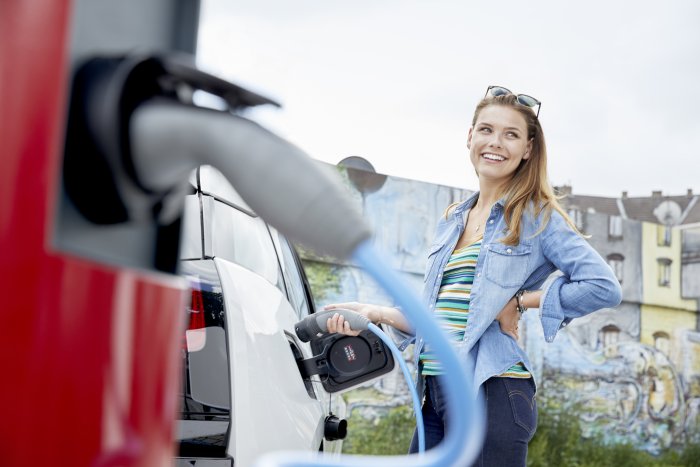Second-hand is the New New

Bertalan Halász, the director-general of joautok.hu.
In the beginning, it was the microchip shortage disrupting supply chains. Now it is the war in Ukraine. The result is a market with a severe lack of new cars and a reevaluation of second-hand autos.
The first signs of a changing market appeared in January this year. Online portal mobile.de indicated that Germany’s second-hand small auto segment grew by 24.3% year-on-year, reaching an average price of EUR 15,961, while the middle-upper sector went above EUR 40,000 for the first time.
Between November 2020 and November 2021, the average period for selling a second-hand car fell by 10 days, down to 86, and the number of vehicles on sale plummeted by 28.8%, from 693,000 to 493,000. The trends were fueled by several factors: a narrowing of production of new autos due to the chip shortage and a higher demand for vehicles, given the need for isolation during the pandemic and a reluctance to travel on mass public transport.
This was terrible news for the Hungarian second-hand car market, as Germany and Austria were traditionally the primary sources for local dealers. But the snowball effect was already there. According to data published by second-hand car online sales portal hasznaltauto.hu, in Q1 2020, the average price of used cars for sale was slightly above HUF 2.5 million, rising to HUF 3.5 mln in Q1 2021 and to HUF 4.5 mln in Q4 2021.
Another Hungarian online portal, joautok.hu, operates differently from hasznaltautok.hu. Users cannot post cars for sale freely; instead, joautok.hu has agreements with carefully selected and checked dealers to ensure that the autos offered on the site are guaranteed to be technically in optimal condition and meet legal norms for origin and usage.
This not only ensures safety for buyers but also allows for the gathering of relevant and reliable data about the car market. Of the roughly 2,500 car dealers operating across Hungary, joautok.hu has contracts with about 400. To further refine the data, joautok.hu partnered with Datahouse, which monitors all car registrations with the Hungarian authorities, both new autos and second-hand imported vehicles.
Feeding the Fleet
Bertalan Halász, the director-general of joautok.hu told the Budapest Business Journal that the total amount of cars currently in Hungary is around 4.3 million. Two channels add to this number: new autos and imported used cars. Each adds approximately 150,000 vehicles annually to the national fleet.
Until recently, the growth has been continuous: 10-12 years ago, Hungary’s national fleet numbered about 2.8 million autos. The cars exiting the market usually go to disassembly yards or continue their life cycle in other countries, typically further east of Hungary. Internally, cars are sold on average at HUF 3.5 mln, while dealers have a margin of about HUF 250,000 per car, Halász says.
The combined data acquired by joautok.hu and Datahouse indicates massive changes recently in the auto market in Hungary. In more normal times, the posted cars have a narrow bargain margin. That wasn’t so much the case at dealers, however, because they were not under time pressure to sell fast.
“But these times are not ‘normal,’ and cars are sold without bargaining. Dealers cannot meet demand; cars are sold in a very short time, at the advertised price. In some cases, buyers are even auctioning cars, so some of them may sell at a higher price than advertised,” Halász says.
As for specific brands, here there are also changes. For years, the popular choices in Hungary were compact cars; the VW Golf, Ford Focus, and Opel Astra. During the last 5-10 years, Korean brands have risen significantly. Meanwhile, designs have changed too. The popularity of compact cars pushed automakers to build them larger, and now they are eating up the middle-upper category car segment.
“Nowadays, we see very little difference in length between a BMW 3 combi and an Opel Astra,” Halász points out.
Low Cost, High Demand
The COVID pandemic had its own impact on the second-hand auto market. A completely new segment emerged: the second or third car per family. Very cheap, very small vehicles were suddenly in high demand, driven by the fear of infection in public transport.
Beginning in 2020, used cars worth around HUF 500,000 were massively imported from Western countries. The sales of aging Opel Corsa and Suzuki Swift models were wild back then, although it has slowed since. The big hit these days are younger second-hand autos. The problem is that there are none left on the market.
In Hungary, as in Western countries, the majority of all new cars sold, roughly two-thirds to three-quarters, start their life cycle in company car fleets. Before the credit bubble burst in 2008, many private buyers also bought new cars. The credit volume was so huge that dealers were selling new autos with zero margins, making profits instead from credit placement commissions.
After the leasing period ended, fleet cars, usually two-to-four-years-old, were sold to dealers and from there on to private buyers. But this chain has been fundamentally damaged. There are far fewer new autos on the market. A Skoda Octavia, a popular fleet car, is now shipped no sooner than 16-18 months.
As companies find it harder to replenish their fleet, the young second-hand car market has dried up. Hungarian dealers have tried to import from Western countries, but they also lack new cars for similar reasons.
This all leads to another negative phenomenon: the growing age of cars. In 2008-2009, when many new autos were entering the national fleet, the average age of a vehicle was 10 years. Last year, this had risen to 15 years, and with the supply chain disrupted by the war in Ukraine, this will likely further deteriorate, Halász warns.
This article was first published in the Budapest Business Journal print issue of May 20, 2022.
SUPPORT THE BUDAPEST BUSINESS JOURNAL
Producing journalism that is worthy of the name is a costly business. For 27 years, the publishers, editors and reporters of the Budapest Business Journal have striven to bring you business news that works, information that you can trust, that is factual, accurate and presented without fear or favor.
Newspaper organizations across the globe have struggled to find a business model that allows them to continue to excel, without compromising their ability to perform. Most recently, some have experimented with the idea of involving their most important stakeholders, their readers.
We would like to offer that same opportunity to our readers. We would like to invite you to help us deliver the quality business journalism you require. Hit our Support the BBJ button and you can choose the how much and how often you send us your contributions.







